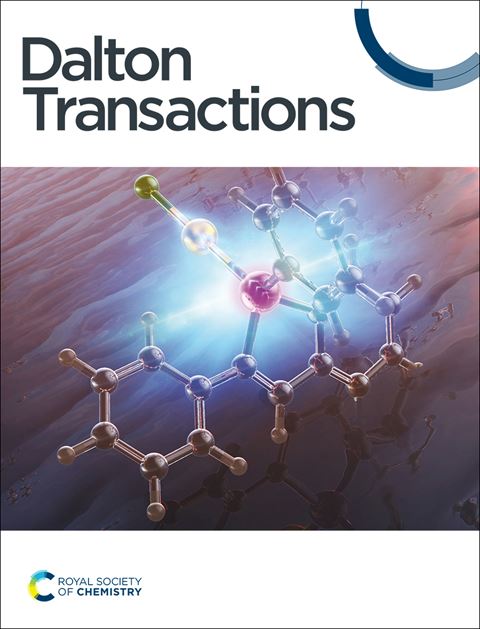Metal Ion Independent Conductance Through Bis-chelated Metal Complex Molecular Wires based on a Bis(diphenylphosphino)aniline Derivative
IF 3.5
3区 化学
Q2 CHEMISTRY, INORGANIC & NUCLEAR
引用次数: 0
Abstract
It is becoming increasingly evident that transition metal complexes impart desirable qualities in single-molecule electronics, and testing metallic centres in combination with appropriate ligands is salient to building the next generation of single-molecule devices. Metal-phosphine complexes have been the subject of very few studies, despite their extensive use in other areas of chemistry. In this contribution, we fabricated and studied robust single-molecule junctions using linear bischelated ligand-metal-ligand complexes of the type [M(PNP)2]PF6 (M = Cu(I), Ag(I) or Au(I); PNP = bis(diphenylphosphino)aniline functionalised with methylthio contact groups). The robustness of the devices was evinced by surface-enhanced Raman spectroscopy (SERS) and scanning-tunnelling microscopy break junction (STM-BJ) methods, and the conductance of the devices was found to be independent of the central transition metal. Quantum transport calculations show consistent HOMO-LUMO gaps between the studied complexes in the transmission plots, supporting the experimental findings. This study shows that bischelation is a viable approach to the fabrication of stable and robust metal-phosphine devices.基于双(二苯基膦)苯胺衍生物的双螯合金属络合物分子线的金属离子非依赖性电导
越来越明显的是,过渡金属配合物在单分子电子学中具有理想的质量,并且测试金属中心与适当配体的结合对于构建下一代单分子器件是显着的。金属-膦配合物一直是很少研究的主题,尽管它们在化学的其他领域广泛使用。在这篇论文中,我们利用线性双螯合配体-金属-配体配合物[M(PNP)2]PF6 (M = Cu(I), Ag(I)或Au(I))制造和研究了坚固的单分子连接;PNP =双(二苯基膦)苯胺与甲基硫基接触基团功能化)。表面增强拉曼光谱(SERS)和扫描隧道显微镜断结(STM-BJ)方法证明了器件的鲁棒性,并且发现器件的电导与中心过渡金属无关。量子输运计算表明,在传输图中所研究的配合物之间存在一致的HOMO-LUMO间隙,支持实验结果。该研究表明,双螯合是一种可行的方法来制造稳定和坚固的金属磷化氢器件。
本文章由计算机程序翻译,如有差异,请以英文原文为准。
求助全文
约1分钟内获得全文
求助全文
来源期刊

Dalton Transactions
化学-无机化学与核化学
CiteScore
6.60
自引率
7.50%
发文量
1832
审稿时长
1.5 months
期刊介绍:
Dalton Transactions is a journal for all areas of inorganic chemistry, which encompasses the organometallic, bioinorganic and materials chemistry of the elements, with applications including synthesis, catalysis, energy conversion/storage, electrical devices and medicine. Dalton Transactions welcomes high-quality, original submissions in all of these areas and more, where the advancement of knowledge in inorganic chemistry is significant.
 求助内容:
求助内容: 应助结果提醒方式:
应助结果提醒方式:


